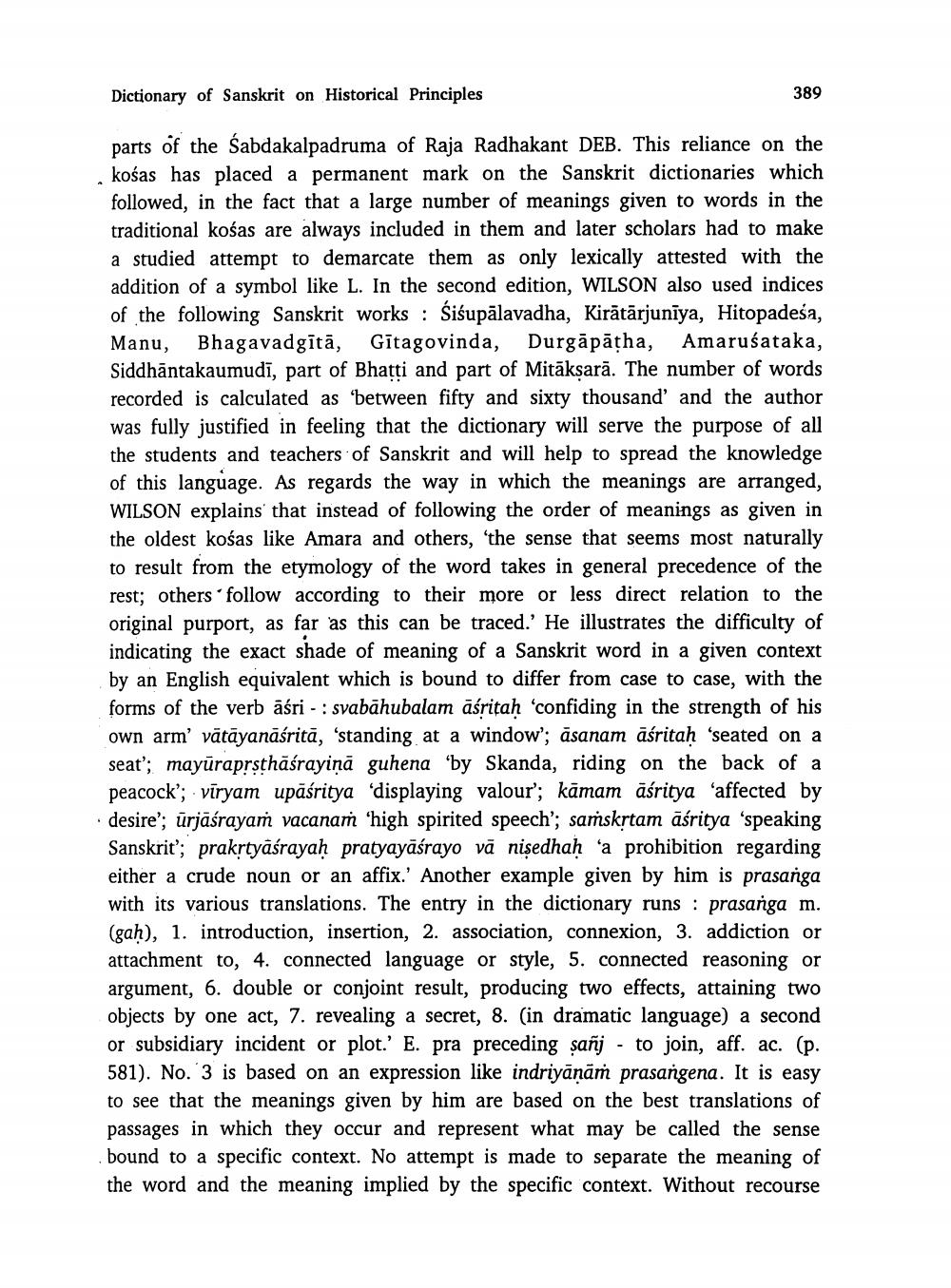________________
Dictionary of Sanskrit on Historical Principles
389
parts of the Sabdakalpadruma of Raja Radhakant DEB. This reliance on the kośas has placed a permanent mark on the Sanskrit dictionaries which followed, in the fact that a large number of meanings given to words in the traditional kośas are always included in them and later scholars had to make a studied attempt to demarcate them as only lexically attested with the addition of a symbol like L. In the second edition, WILSON also used indices of the following Sanskrit works : Siśupālavadha, Kirātārjunīya, Hitopadesa, Manu, Bhagavadgītā, Gītagovinda, Durgāpātha, Amaruśataka, Siddhāntakaumudī, part of Bhatti and part of Mitākṣarā. The number of words recorded is calculated as between fifty and sixty thousand and the author was fully justified in feeling that the dictionary will serve the purpose of all the students and teachers of Sanskrit and will help to spread the knowledge of this language. As regards the way in which the meanings are arranged, WILSON explains that instead of following the order of meanings as given in the oldest kośas like Amara and others, 'the sense that seems most naturally to result from the etymology of the word takes in general precedence of the rest; others' follow according to their more or less direct relation to the original purport, as far as this can be traced.' He illustrates the difficulty of indicating the exact shade of meaning of a Sanskrit word in a given context by an English equivalent which is bound to differ from case to case, with the forms of the verb asri - : svabāhubalam āśritaḥ 'confiding in the strength of his own arm vātāyanāśritā, 'standing at a window'; asanam āśritaḥ 'seated on a seat'; mayüraprsthāśrayinā guhena 'by Skanda, riding on the back of a peacock'; vīryam upāśritya 'displaying valour'; kāmam āśritya ‘affected by · desire'; ūrjāśrayaṁ vacanaṁ 'high spirited speech'; samskstam āśritya 'speaking Sanskrit; prakrtyāśrayah pratyayāśrayo và niședhah'a prohibition regarding either a crude noun or an affix.' Another example given by him is prasarga with its various translations. The entry in the dictionary runs : prasanga m. (gah), 1. introduction, insertion, 2. association, connexion, 3. addiction or attachment to, 4. connected language or style, 5. connected reasoning or argument, 6. double or conjoint result, producing two effects, attaining two objects by one act, 7. revealing a secret, 8. (in dramatic language) a second or subsidiary incident or plot.' E. pra preceding sañj - to join, aff. ac. (p. 581). No. 3 is based on an expression like indriyānāṁ prasangena. It is easy to see that the meanings given by him are based on the best translations of passages in which they occur and represent what may be called the sense bound to a specific context. No attempt is made to separate the meaning of the word and the meaning implied by the specific context. Without recourse




